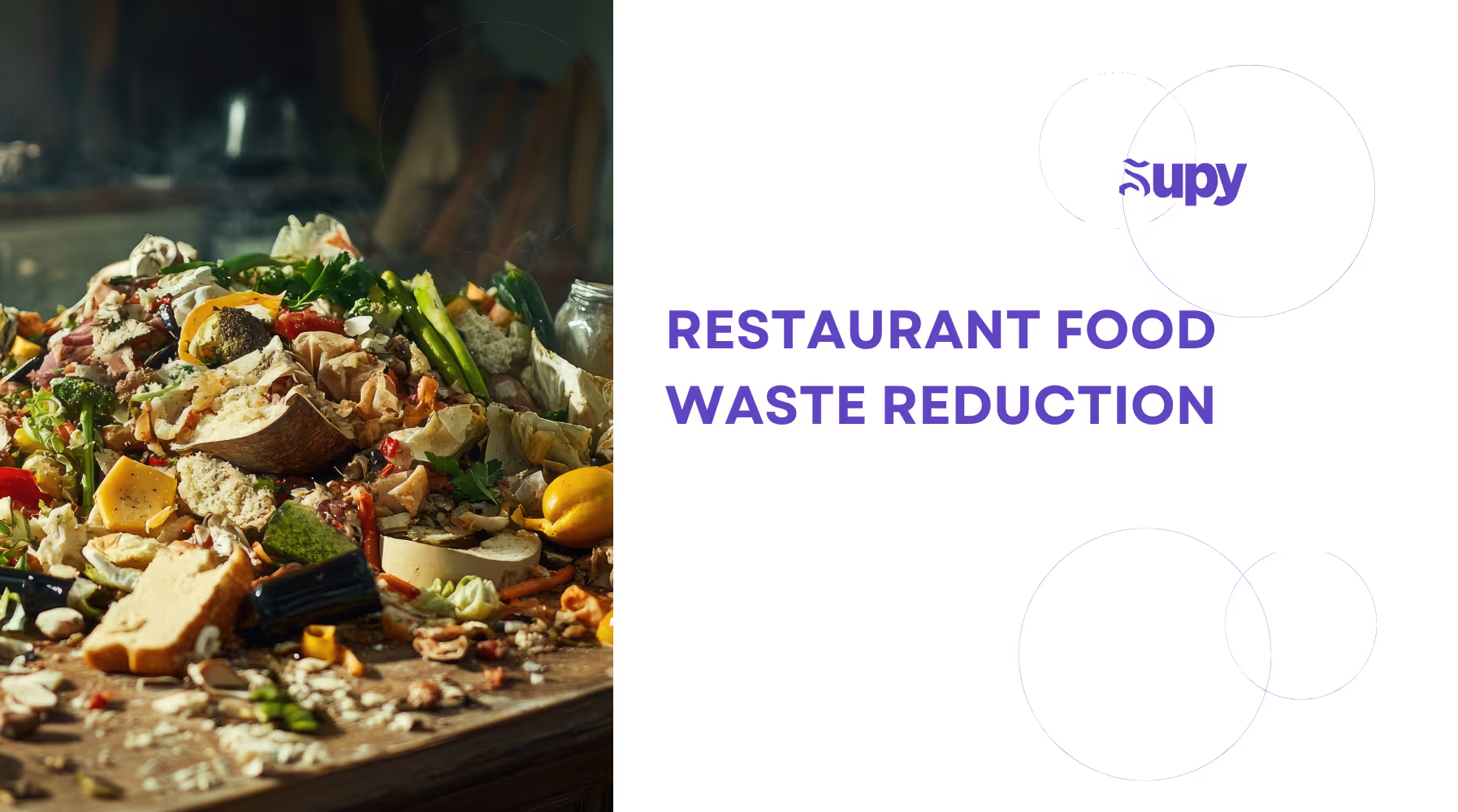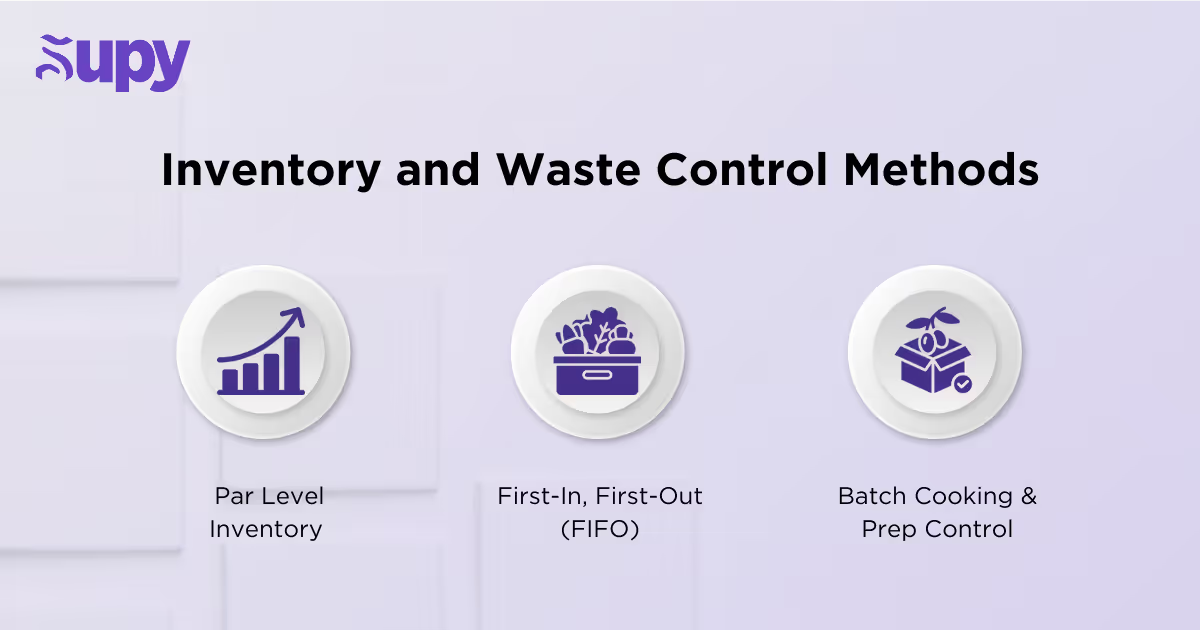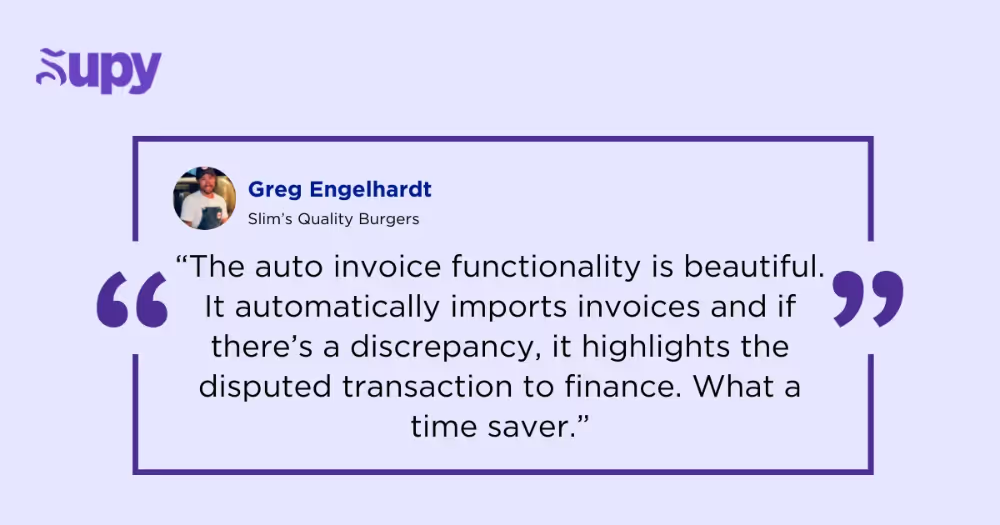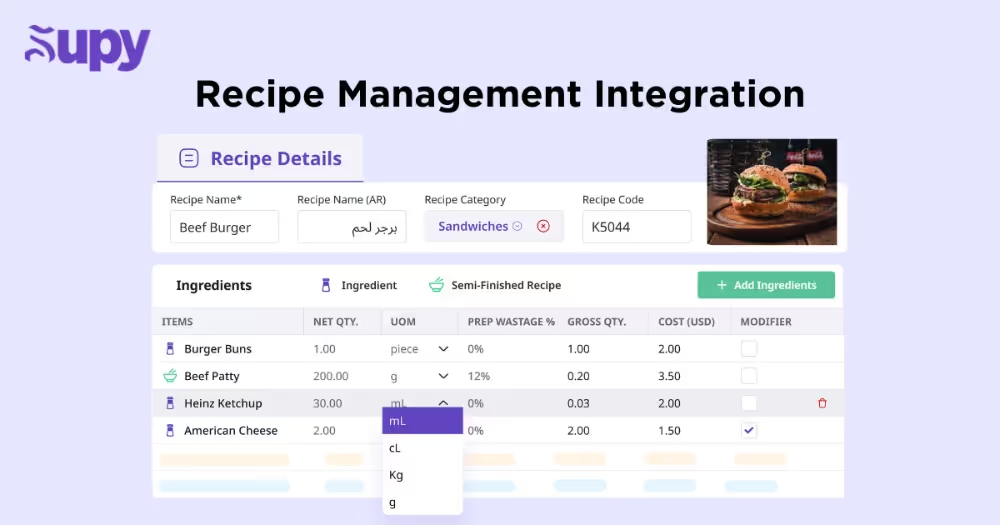The Impact of Food Waste on Restaurant Food Costs and How to Reduce It

Food waste is a silent profit killer in the restaurant industry. According to the National Restaurant Association, wasted food can account for 4% to 10% of food purchases, adding up to thousands of dollars lost every year. These costs add up quickly, making waste management a critical factor in controlling expenses.
Implementing better waste management strategies lowers operating expenses while promoting sustainability. Efficient inventory tracking, portion control, and real-time monitoring help restaurants cut costs and minimize their environmental footprint. Every effort toward restaurant food waste reduction strengthens both profitability and long-term responsibility.
Let’s explore some food waste reduction practices that can help restaurants save money and operate more sustainably.
- Conduct a Comprehensive Food Waste Audit
- Implement Inventory Management Best Practices
- Optimize Menu Design and Portion Sizes
- Train and Engage Staff in Waste Reduction Efforts
- Leverage Technology for Waste Monitoring
- Partner with Food Recovery and Composting Programs
- Turning Waste Reduction into Profit
1. Conduct a Comprehensive Food Waste Audit
Food waste adds up quickly in restaurants, cutting into profits and creating unnecessary costs. A waste audit helps pinpoint where losses happen, whether ingredients go bad before use, excess prep that never makes it to the table, or portions customers can’t finish. Identifying these patterns is the first step toward minimizing food waste and improving efficiency.
A food waste audit tracks and categorizes discarded food to determine where waste occurs, why it happens, and how to prevent it. This allows restaurants to take targeted actions, minimize losses, and improve kitchen operations.
Here are some key areas you need to focus on:
Pre-Consumer Waste (Back-of-House Waste)
Pre-consumer waste occurs before food reaches the customer, often due to mismanagement in storage, preparation, or handling. Addressing these inefficiencies reduces unnecessary losses and keeps inventory under control.
- Spoilage – Ingredients expire due to overordering, improper storage conditions, or poor stock rotation. Implementing FIFO (First-In, First-Out) inventory practices ensures older stock is used first. Proper stock rotation helps prevent leftover ingredients from being wasted.
- Over-Preparation – Prepping too much food leads to unnecessary waste when unused portions cannot be repurposed. Adjusting batch sizes based on order history prevents excessive preparation.
- Trimmings & Expired Inventory – Usable food scraps, such as vegetable stems or meat trimmings, often go to waste instead of being repurposed in broths, sauces, or side dishes. Training staff to maximize ingredient usage helps reduce this issue.

Post-Consumer Waste (Front-of-House Waste)
Post-consumer waste happens after food has been served, often due to oversized portions, customer dissatisfaction, or incorrect orders. Refining portion sizes and improving service accuracy can significantly reduce this type of waste.
- Plate Waste – Customers leave food uneaten when portions are too large or meals don’t meet expectations. Analyzing consumption trends helps adjust serving sizes without compromising satisfaction.
- Order Errors – Mistakes in order fulfillment lead to food being sent back and discarded. Staff training and digital order tracking systems become essential reduce errors and prevent unnecessary waste.
A waste tracking system creates visibility into where and why food is being discarded. Logging waste consistently helps restaurants identify recurring inefficiencies and make data-driven adjustments.
Clean data tracks waste trends over time, revealing patterns in spoilage, over-preparation, and plate waste. With better insights, businesses can refine inventory management, portion control, and food preparation strategies to minimize food waste and improve cost efficiency.
2. Implement Inventory Management Best Practices
Keeping tight control over inventory is one of the most effective ways to reduce food waste and cut costs. Poor tracking leads to over-ordering, spoilage, and unnecessary waste. A well-organized inventory system ensures that food purchased is used efficiently, preventing excess stock from going bad before it’s needed.
If inventory tracking is done right, it also helps connect the dots between food waste and purchasing habits. Comparing waste data with inventory records from a POS system or restaurant back-office software reveals patterns in wasteful spending, over-prepping, or storage inefficiencies.
Infographic
Here are some inventory control methods to focus on:
- First-In, First-Out (FIFO) – Ensures older stock is used before newer inventory, reducing spoilage and maintaining food freshness. This method lets restaurants store food properly, preventing unnecessary waste and ensuring compliance with food safety standards.
- Par Level Inventory System Establishes minimum and maximum stock levels based on historical data to prevent overstocking. Maintaining optimal inventory levels reduces spoilage while ensuring there is enough edible food available to meet customer demand.
- Batch Cooking & Prep Control helps prepare ingredients in measured amounts to avoid excess waste and adjust prep based on sales trends.
3. Optimize Menu Design and Portion Sizes

Sales data reveals which menu items generate unnecessary waste or fail to sell well. Dishes that don’t perform often lead to unused ingredients sitting in storage, increasing spoilage and costs. Removing or modifying these items helps reduce waste and simplifies kitchen operations.
Recent surveys show that over 75% of diners prefer smaller portions, making portion control a smart strategy for both waste reduction and customer satisfaction. Portion sizes should match what customers want. Oversized meals often result in plate waste, as diners struggle to finish their food. Offering flexible portions, such as half servings or customizable sides, prevents food from going uneaten while giving customers more choices. Smaller portions don’t just cut waste; they also lower food costs and improve the overall dining experience.
A well-planned and sustainable menu keeps operations efficient while meeting customer expectations. Simplifying choices and adjusting portion sizes based on sales data helps reduce waste, cut costs, and improve sustainability. Every dish should add value to both the restaurant and the customer experience.
4. Train and Engage Staff in Waste Reduction Efforts

Reducing food waste starts with well-trained staff. Employees handle food at every stage—from storage to preparation, so equipping them with the right skills helps prevent costly mistakes. Training should cover proper food handling, portioning techniques, and efficient ingredient usage to minimize waste and improve kitchen efficiency.
- Food Handling & Storage: Teaching employees proper storage techniques helps extend shelf life and prevent spoilage. Well-organized storage areas reduce the chances of food expiring unnoticed, ensuring ingredients are used efficiently.
- Portioning & Preparation Techniques: Employees should also be trained to maximize ingredient usage—such as using vegetable stems, meat trimmings, or repurposing leftovers—to reduce unnecessary kitchen waste.
- Building a Culture of Sustainability: Engaging employees in waste reduction initiatives fosters accountability and long-term habits. Encouraging feedback, holding team discussions on sustainability, and recognizing staff contributions to waste reduction help create a more conscious and efficient kitchen environment.
- Technical Training on Inventory & Waste Tracking Software: Educating staff on how to use digital inventory and waste tracking tools enables better stock management. With real-time data, employees can monitor stock levels, adjust ordering based on actual usage, and prevent both overstocking and shortages.
https://youtube.com/shorts/-X9Xlt1aN5w?si=1iyEdIssHBi2ueoZ
A well-trained team can make a significant difference in reducing food waste. When employees are equipped with the right knowledge and tools, they contribute to a more efficient, cost-effective, and environmentally responsible restaurant operation.
5. Leverage Technology for Waste Monitoring
Technology and automation play a critical role in reducing food waste by providing real-time tracking and data-driven insights. AI-powered systems and smart waste monitoring tools help restaurants identify inefficiencies in inventory, preparation, and portioning. These solutions allow businesses to track food waste effectively and measure key performance indicators (KPIs) that directly impact food costs and sustainability efforts.
- Waste Volume & Patterns – Identifies where restaurants generate the most food waste and helps pinpoint recurring inefficiencies.
- Perishable Goods Management – Tracks short-shelf-life items to prevent spoilage and reduce wasted food.
- Inventory Turnover Rate – Measures how quickly ingredients are used vs. wasted to optimize purchasing decisions.
- Portion Waste Analysis – Assesses leftover food to adjust portion sizes and minimize unnecessary discards.
- Cost of Wasted Goods – Calculates financial losses from discarded ingredients, helping businesses refine their waste stream management.
Integrating smart waste monitoring with inventory and POS systems improves accuracy in ordering, portion control, and menu planning. With clean data, restaurants can lower food costs, increase efficiency, and operate more sustainably.
6. Partner with Food Recovery and Composting Programs

Even with strong waste management practices, restaurants often end up with surplus food. Instead of discarding it, donating excess food to food rescue organizations helps redirect meals to those facing food insecurity while lowering disposal costs.
Second Harvest, Food Rescue Locator, and Replate connect participating restaurants with food banks and nonprofits, ensuring safe and efficient redistribution. Many of these programs also offer logistics support, handling pick-ups and deliveries to make the process seamless for restaurant owners.
Another option for food donation is to partner with a local charity organization and ensure that perfectly good food doesn’t go to waste. Many nonprofits accept surplus meals from restaurants and distribute them to those in need. Setting up a streamlined donation process with proper packaging, such as takeout containers, makes it easier to transport and serve food safely.
For food that cannot be donated, composting provides an environmentally responsible alternative. Organic waste in landfills generates methane, a potent greenhouse gas, but composting facilities transform scraps into nutrient-rich soil that benefits agriculture and urban landscaping.
Many cities now offer composting services designed for full service restaurants, making it easier to divert food waste from landfills. Some composting programs even provide impact reports, allowing businesses to track their contributions to sustainability and reinforce their commitment to eco-friendly operations.
7. Turning Waste Reduction into Profit
Food waste challenges cost the restaurant sector millions each year, cutting into already thin profit margins. A few simple changes, like better tracking, smarter ordering, and portion adjustments, can make a big difference. Managing food waste in restaurants effectively results in cost savings, higher efficiency, and a more sustainable business. It’s not about major overhauls but small, consistent improvements that add up over time.
With Supy’s inventory management system, you can gain real-time insights, cut unnecessary waste, and keep your kitchen running smoothly. Take control of your food costs and start making every ingredient count with Supy.
Related Resources







